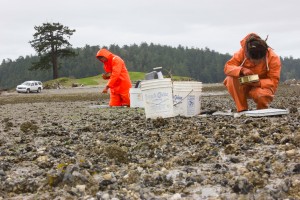By Vincent Schilling, Indian Country Today Media Network
As a young Navajo woman that began her path to basketball stardom playing on dirt courts on her reservation, Ryneldi Becenti worked hard to become a star point guard at Arizona State in the 1990s. Following her stellar career with ASU, Becenti played basketball professionally in Europe and in the WNBA. In 1996 she became the first woman inducted into the American Indian Athletic Hall of Fame.
In addition to that accolade, Becenti was also inducted into three others: the Scottsdale Community College Hall of Fame, Arizona State University Hall of Fame and the Arizona High School Sports Hall of Fame. Today, she teaches and coaches the next generations of players in Ganado, Arizona.
After a successful 2013 season for women Native American basketball players, Becenti took a few moments to sit down with ICTMN [Indian Country Today Media Network] as part of our Conversations With Champions series to discuss her climb to the top, what it takes to succeed as a Native woman hooops player and what her thoughts are about the accomplishments of Native American basketball players today.
You played in the WNBA–the first Native player to do so–the dream for so many. How does it feel to have accomplished that?
It was one of the biggest accomplishments in my life. I have always dreamt of getting to the WNBA. I think that the ultimate accomplishment is that I got into the WNBA as an American Indian. That, and making my community and Native Americans proud was a big deal for me.
When I look back, I feel so blessed and grateful that I did play with such great players such and having Cheryl Miller as my coach. Sometimes I just don’t have words to explain it, but it is so memorable and I’m so grateful that I had the opportunity.
Ryneldi Becenti poses with her former coach Bike Medder after being inducted in 2011 into the Scottsdale Community College Hall of Fame. (Ryneldi Becenti/Navajo Times)
You surpassed many odds to become successful, how did you do that?
You cannot teach passion and you cannot teach heart toward the game of basketball. It comes from within you. At a young age I was instilled with a passion to love the game of basketball. I wanted it so much. I was inspired by my parents who played in Indian reservation tournaments. They had passion and heart and loved basketball.
I grew up being a gym rat and at that time I didn’t have a Native American who was out there playing college ball or anything, so that was one of my motivations. When I saw Cheryl Miller playing on the Olympic team, and I saw that she was African-American, she became one of my role models. On top of all this, I thought, maybe I could be the first.
For me, I just had that driving force to accomplish so much. My dad said that I was given talent and I was given the gift of basketball. He told me about peer pressure and that people would be jealous. I was given that push from him. Once I became a good player, I knew I had to push 10 times harder to get where I wanted to get to.
Who taught you the most about basketball growing up?
I was given all of this talent and I was pushed by my dad, who definitely knew the game of basketball. My mom passed away when I was in eighth grade. She was a good player but never got to play college basketball. That was a motivation for me to live my life for her. She was a woman I could really relate to. I have four brothers so I had a tomboy attitude. It gave me more motivation and more desire – I had nothing to lose.
Overall, I am so grateful that I was surrounded by so many good players and so many good coaches and received such support from my family and my community. It was tough at times, but I’m glad I had a father who was mentally strong when I was at a young age. When people had sarcastic remarks, or said mean things it never bothered me.
There were things my dad taught me as a little kid that really stuck with me. I did not go to one single basketball camp, my dad just told me how to dribble and I would practice and practice. Many times when I was sleeping, he would say. ‘If you want to be good, you can’t be lying in bed.’
If he had comments, I would work to prove that I could do it. Sometimes he played reverse psychology with me, and said, “I don’t think you can do this.’ I would say, ‘I’m going to prove you wrong.’ But it was all in a positive way.
How does it feel that you have been inducted into four halls of fame?
It is a great achievement. I am happy that I have been inducted, but I recognize my coaches and teammates–it is because of them too. I never thought this would happen, and even right now it still hasn’t hit me until someone says it.
Becenti, in her hugely successful Scottsdale CC days. (American Indian Athletic Hall of Fame)
What did you think this year of Jude and Shoni Schimmel this year?
It was a great feeling to watch them on TV. They represented Native Americans and youth that want to be like them. I hope it gives them that much more motivation to excel. I hope these college coaches can now take this chance and opportunity to go to reservations and look for more talented young girls.
When I was growing up, we never had coaches go to the rez. There is a lot of talent out there, and I see all of these young girls on reservations, who are talented and good. But I also tell them they have to get out there. I say, ‘if you want to play college ball, you’re going to have to start calling these coaches and be confident about it.’ They need to tell them, ‘I can play for your program.’
What you think is in the future for Native American ballplayers?
I think there is a bright future now, I really do. I hope that the Schimmel’s will maybe get into the WNBA and that Goodrich is also successful. Every little thing that we can do that the youth will grasp onto is important. We are all proud knowing that they are excelling.
If you want to excel at this level, it really does take a lot of hard work. It really is like a job. You cannot say that you’re going to play high school ball and that’s it, you have to constantly play a lot.
Read more at http://indiancountrytodaymedianetwork.com/2013/05/06/ictmn-talks-hall-famer-ryneldi-becenti-149215















